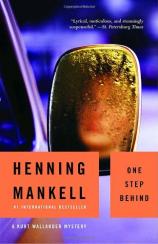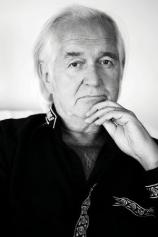Reading Group Guide
Discussion Questions
One Step Behind

1. One Step Behind begins with Inspector Kurt Wallander nearly being killed in a car accident after falling asleep at the wheel. What tone does this near-death experience set for the novel? What role does Wallander's fatigue play in the events that follow?
2. Early in the novel, Wallander thinks of his colleagues: "They don't know much about me and I don't know much about them. We work together, maybe over the course of an entire career, and what do we learn about each other? Nothing" [p. 29]. In what ways can the novel be read as a meditation on the limits of human knowledge? Where else in the story does this lack of knowledge play a significant role?
3. In trying to fathom the murderer's mindset, Wallander thinks, "I've never believed in pure evil. There are no evil people, no one with brutality in their genes. There are evil circumstances and environments, not evil per se. But here I sense the actions of a truly darkened mind" [p. 162]. Is he correct in thinking that brutal behavior is a result of one's environment rather than of one's character? What motivates the killer in One Step Behind to commit his crimes?
4. Wallander is often "struck by the feeling that something [isn't] quite right" [p. 65]. To what extent does he rely on feeling and intuition to guide him in solving the mystery in One Step Behind?
5. At various points throughout the novel, and especially after Isa is murdered, Wallander is accused of botching the investigation. Are the criticisms brought against him justified? What mistakes does he make? Should he have been able to foresee his errors?
6. Wallander is an unusually disheveled kind of detective. Far from being a self-confident tough-guy, he's forgetful, full of self-doubt, in poor health, prone to mistakes, and perpetually exhausted. Why do these characteristics tend to make him a more, rather than less, appealing protagonist? What would the novel lose if Wallander were more conventionally competent? What qualities make him a forceful figure, despite these weaknesses?
7. Wallander observes that there was a similarity between his murdered colleague Svedberg and the young people killed in the nature preserve: "They had all had secrets" [p. 210]. Who else in the novel has a secret? In what way is the novel really about keeping and uncovering secrets?
8. Martinsson observes that the killer "always manages to stay one step ahead of us and one step behind at the same time" [p. 394]. How does Mankell keep the reader also one step ahead and one step behind the actions of the murderer? Why does Mankell often allow the reader to know more than the detectives? What kind of suspense does this knowledge create?
9. Late in the novel, as Wallander and the other detectives come close to despair, Martinsson argues that the killer has no motive, that he kills simply "for the sake of killing." When Wallander disagrees, Martinsson says, "Until a few years ago, I would have agreed with you: there's an explanation for all violence. But that just isn't the case any more" [p. 331]. Does this particular killer have an understandable motive? Or is he right in suggesting that violence in our time is increasingly senseless?
10. How is Wallander able to solve this mystery? What are the major turning points in his investigation? What qualities of character and intelligence enable Wallander to apprehend the killer?
11. What picture of Swedish society emerges from One Step Behind? How do the novel's minor characters—Isa Edengren and her wealthy parents, the bank director Bror Sundelius, Svedberg's cousin Sture Bjorklund, the mailman Westin, and others—contribute to the overall social reality of the novel? Are Martinsson and Wallander right in thinking that Swedish society is unraveling?
12. One Step Behind is preceded by an epigraph from the Second Law of Thermodynamics: "There are always more disordered than ordered systems" [p. vii]. And Wallander thinks to himself, "reality was rarely reasonable" [p. 98]. How is this disordered sense of reality conveyed in the novel? Which plays a greater role in solving the murder mystery in the novel: the use of reason or the reliance on spontaneous, irrational hunches?
13. Of the gawkers who come to look at a crime scene, Wallander says, "They probably get a thrill from being in the presence of the unthinkable. . . . Knowing that they themselves are safe" [p. 315]. Is this, at least in part, the reason why people read thrillers?
14. How does One Step Behind differ from American thrillers? What qualities distinguish the novel, and its hero, Kurt Wallander, as distinctly European?
One Step Behind
- Publication Date: January 14, 2003
- Paperback: 440 pages
- Publisher: Vintage
- ISBN-10: 1400031516
- ISBN-13: 9781400031511








